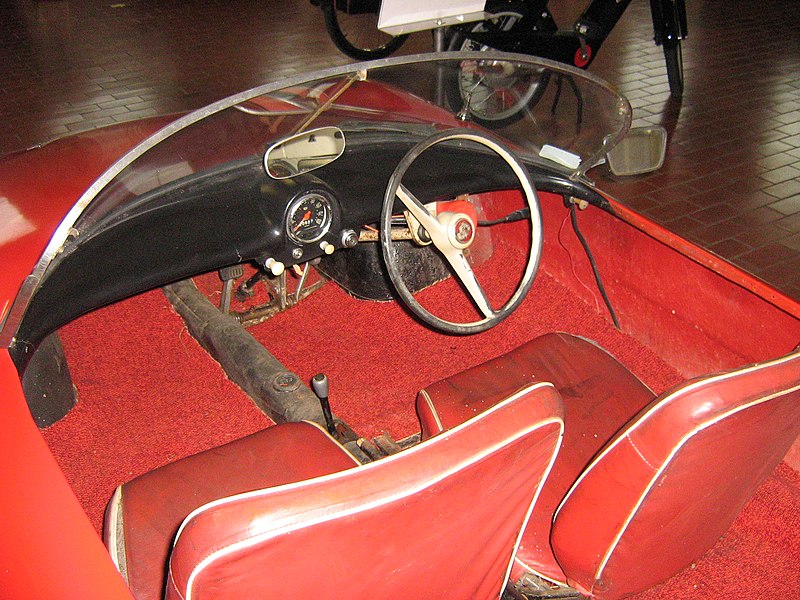Goggomobil Dart
The Goggomobil Dart was a microcar which was developed in Australia by Sydney company Buckle Motors Pty Ltd. and produced from 1959 to 1961.
The Dart was based on the chassis and mechanical components of the German Goggomobil microcar, which was a product of Hans Glas GmbH of Dingolfing, in Bavaria, Germany. The car featured an Australian-designed fiberglass two-seater open sports car body without doors, the whole package weighing in at only 345 kg (761 lb). It was powered by a rear-mounted twin-cylinder two-stroke motor available in both 300 cc and 400 cc variants,and had a small luggage compartment built into the nose. The Dart was designed in 1958 and went on sale the following year, with around 700 examples produced up to the time that production ceased in September 1961
Zeta
Zeta is a marque of automobile which was produced in Australia from 1963 to 1965 by South Australian manufacturing company Lightburn & Co.
An established manufacturer of cement mixers and washing machines, Lightburn and Co. built the cars in its factory in the Adelaide suburb of Camden Park. The first Zeta model was introduced in 1963 at a price of £595. Production ceased in 1965 with the last vehicles sold in 1966 and total sales of fewer than 400 vehicles
Felber
The Felber Autoroller T 400 was a three-wheeled microcar with a rear-mounted 398 cc Rotax two cylinder opposed twin, two stroke 15 metric horsepower (11 kW) engine. The cars had an unusual seating arrangement, with a small child-sized seat behind the driver on the left and a conventional passenger seat diagonally behind and to the right.
A. Felber & Co were a well known manufacturer of motorcycle sidecars, based in Vienna, Austria. The Autoroller was designed by Ernst Marold.[1] From 1952 to 1953, about 400 units were built in two versions, all of which were painted light green using a standard paint then used for machinery which was cheaper than car paint. Early models had cycle-type mudguards that swivelled with the front wheels, later models had fixed wings.
Haflinger
The Haflinger is a small, lightweight, four wheel drive, high mobility vehicle about 3.5 m long and 1.5 m wide, powered by a 643 cc flat twin horizontally opposed, rear mounted, air-cooled engine. Weighing around 600 kg (1322.8 lb), the Haflinger can be lifted by four strong people and yet can carry a load of 500 kg (1102.3 lb). This truck falls into the category of the light utility vehicle.
Libelle
The Libelle was an Austrian three-wheeled microcar built in Innsbruck by Libelle Fahrzeugbau- und Vertriebsgesellschaft between 1952 and 1954. It had a one-cylinder two-stroke Rotax engine with 199 cc and 8.5 hp, and 4 gears.
About 50 are believed to have been built; the only known "survivor" is in the exposition of the RRR scooter museum in Eggenburg, Austria.
Möve 101
The Möve 101 was a microcar with egg-shaped coupé bodywork based on a Felber Autoroller chassis. Ten cars were built in Vienna by a specialist coachbuilding company Hofmann & Moldrich in 1953. Though the fully enclosed bodywork made from 0.8 mm aluminium plate was more sophisticated than that of the Felber, the car proved more expensive to produce and the heavier bodywork reduced performance and made the car less stable. Möve translates into English as Gull.The only known survivor is in the Automobilmuseum Aspang/Wechsel in Austria.





















.jfif)




No comments:
Post a Comment